|
|
|
Workshop general
|
|
Workshop program
|
|
Application
|
|
|
Equipment
|
| Ten Takadai are available with bobbins for rental at 1000 yen per day. |
|
|
Materials Fee
|
| 3200 yen for silk and 1600 yen for sinon. If you prefer using other threads such
as cotton or wool, please carry them on in two to four colors and in a sufficient
length. |
|
|
What to bring
|
| A scissor and tools of writing including pencil, eraser and color felt pen. |
|
| |
 |
|
Author's book 1986
|
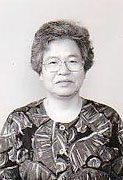 |
|
Yayoi Miura
|
|
|
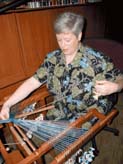
|
|
Carol Franklin
|
|
|
Students
|
Lyn Christiansen
Hideyo Fujimura
Yumiko Kikukawa
Mona Killingworth
Hiroko Matsuda
Debbie Richardson
Anne Whitehead
(7 of 10) |
|
Supplemental Class for Takadai Beginners
Kumiko Suzuki
(1 of 5) |
|
| This class is for advanced students, who will learn how to create a desired pattern
with double braids. |
| Yayoi Miura |
Saitama, Japan
|
|
Kouraigumi has been described for a long time with Ayagaki which specifies bobbin
exchange and thread directions. It was said that Ayagaki could be derived from the
raveled threads of the braid on which paterns were directly drawn. This is not an
easy practice and was available only for artisans.
Recently Kumihimo is being taught in Kumihimo schools in Japan and many foreign people
can also enjoy it. My first Kumihimo lesson was in such a school in 1974.
When I masterd Kouraigumi, I wanted to create my own patterns and developed an Ayagaki
method using a magnified thread structure drawn on a graph paper. This method was
published in 1986 as a book Method of Kourai Drawing to share this method with every
one. I found some mistakes in this book and have shown corrections in my web
site becaue the revised edition of the book is not scheduled. If you have already
mastered Kouraigumi, you may be able to create your own patterns with the help of
this method. I hope as many as possible Kumihimo people become familiar with Ayagaki.
Publication
Method of Kourai Drawing 1986
Examples of Kourai Drawing 1988
Examples of Kourai Drawing (Supplement) 1990
Ancient 100 famous poems on Kumihimo1992 |
|
|
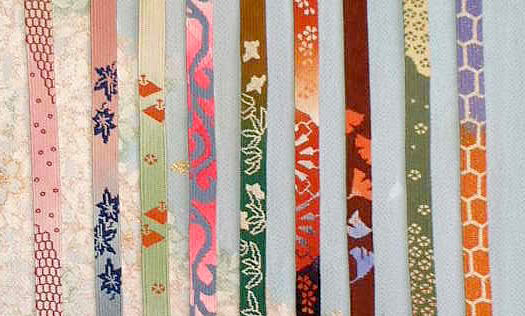
|
| |
| Carol Franklin |
Gainesville FL, USA
|
|
| Carol Franklin of Gainesville, Florida became fascinated with kumihimo more than
ten years ago. As the workshop assistant for Rodrick Owen at HGA Convergence 1998
in Atlanta, Georgia, Carol discovered the taka dai, which has become her primary
focus. She has studied with Rodrick Owen (1998, 1999) and Makiko Tada (2001, 2002).
Carol has taught beginning maru dai classes for the Chattahoochee Handweavers Guild
in Atlanta, Georgia, and for LunaSea conferences in Florida.† Her work in kumihimo
was included in the Handweavers Guild of America Juried Exhibit "Small Expressions"
(2002, Vancouver, British Columbia, Canada) and the International Invitational Kumihimo
Exhibit at the Commonwheel Galery in Manitou Springs, Colorado in 2004.† Carol started
a series of kumihimo swaps for the former Compuserve Online Guild and coordinated
them for a number of years.† She also was an active participant in the Complex Weavers
Kumihimo Study Group for several years.† Carol designed and markets plans for a traveling
taka dai via her web site (www.braidweaver.com), which provides information about
the braiding process on the taka dai. In addition to kumihimo, Carol is active as
a freelance podcast producer and in digital photo restoration. |
|
Lacy Murex
|
|
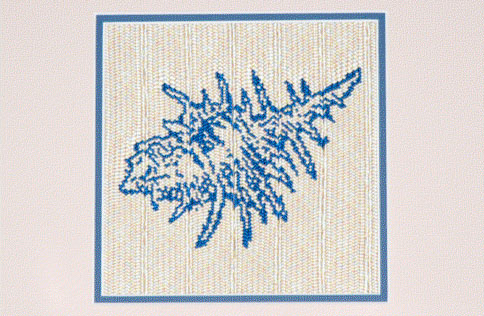
|
|
Kaimana Koi
|
|
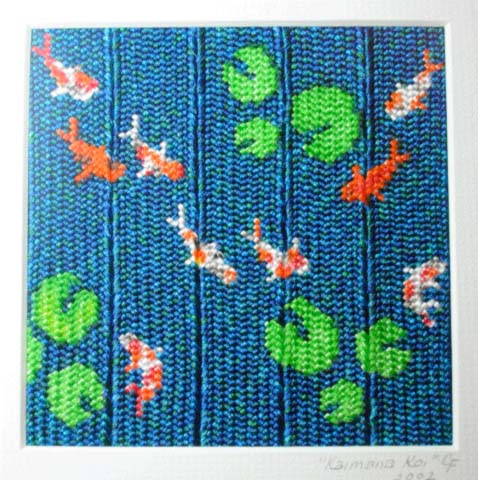
|
|